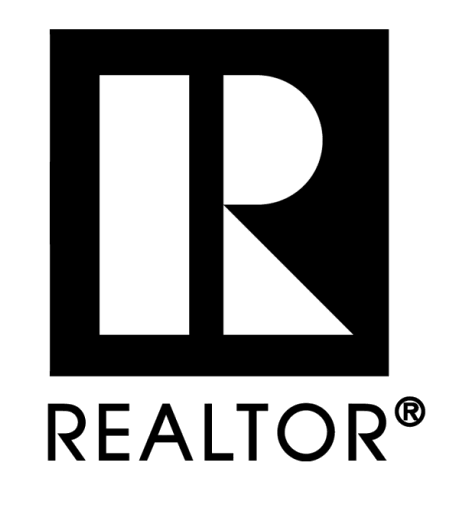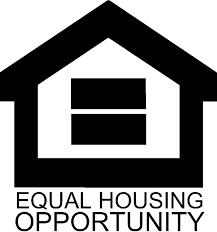The U.S. housing market is nearing a systemic turning point. Unlike the 2008 crash, today’s pressures are spread across multiple fronts: interest rates, affordability, regulatory shifts, and investor activity. None of these issues alone may break the market, but taken together, they’re forming a storm front that real estate professionals can’t afford to ignore.
While the Tri-Cities remains more stable than many coastal or metro markets, our region doesn’t exist in a vacuum. What unfolds nationally in 2025 could carry ripple effects that impact how and where business gets done—even here at home.
Federal Deregulation: Bold Reform or Market Disruption
In January 2025, President Trump signed Executive Order 14192, "Unleashing Prosperity Through Deregulation." This order requires that for every new federal regulation introduced, ten existing ones be repealed. That sweeping mandate is already affecting the housing sector.
Supporters argue that federal red tape adds nearly 25 percent to the cost of building a new home, slowing down projects through layers of environmental, land use, and permit review requirements. By cutting those costs, the administration hopes to unlock new supply.
But critics warn the scale and speed of deregulation could cause delays instead—especially if it disrupts HUD staffing, project oversight, or tariff-protected supply chains. For fast-growing areas like ours, where permitting delays already complicate new builds, even modest changes in oversight could create unexpected logjams.
The Airbnb Bubble: Cracks in the Foundation
The post-pandemic short-term rental (STR) boom is beginning to unwind. In popular travel destinations, vacation bookings have dropped by up to 38 percent from 2019 levels, and some metro areas are seeing occupancy rates dip below 50 percent. Meanwhile, new listings continue to flood Airbnb and VRBO, pushing margins lower.
An estimated $318 billion in STR-backed loans will come due by the end of 2025. Many were written during the low-rate window of 2020–2022 using risky structures like balloon payments and cash-out refinances. Now, with revenues dropping and refinance options evaporating, analysts anticipate a wave of STR inventory hitting the market:
If those numbers hold, more than 2 million homes could hit the resale market in the next 24 to 36 months—reshaping pricing trends, especially in areas with dense STR zoning.
Housing Affordability: A Breaking Point
Affordability has quietly become the most destabilizing issue in the U.S. housing economy. According to the National Association of REALTORS, the median U.S. home price rose to $351,000 in early 2025, up 10.1 percent from two years prior. At the same time, mortgage rates hovering between 6.5 and 7.5 percent have driven monthly payments far above what most buyers can comfortably afford.
The Housing Affordability Index (HAI) helps quantify that pressure. It compares the median household income to the income needed to afford a median-priced home. A score of 100 means a family earns just enough to qualify.
Locally, we calculated the Tri-Cities HAI using verified internal PACMLS data. Based on a median home sale price of $433,000 and average household income across Benton and Franklin Counties, our local HAI stands at approximately 80.9. That means the average household earns just over 80 percent of the income needed to afford a median home here—far short of the affordability baseline.
While we haven’t seen the same extremes as coastal metros, this number shows affordability is an issue here, too. And if a national correction ripples into our market, buyers may wait, downsize, or walk away entirely.
The Lock-In Effect and Frozen Inventory
One of the biggest factors stalling home sales right now is the mortgage rate “lock-in effect.” Nationally, about 85 percent of homeowners hold mortgages under 5 percent. With current rates in the 6.5 to 7.5 percent range, many are reluctant to sell—knowing they’d be giving up a far better loan.
This disincentive to move has frozen much of the existing home inventory. Fewer move-up buyers means fewer starter homes being listed, tightening the market from both ends.
Construction Challenges and Shrinking Supply
The construction sector isn’t picking up the slack. Housing starts are down more than 21 percent, and builder sentiment is at a two-year low. This matters because construction accounts for over 7.7 million jobs and more than $1.2 trillion in economic output nationwide. If the slowdown continues, supply constraints will worsen—and the economic consequences will ripple far beyond housing.
Commercial Real Estate and the Refinancing Wall
Housing isn’t the only market at risk. Commercial real estate faces a looming $1.9 trillion refinancing wall between 2024 and 2026. Regional banks, already tightening lending standards, carry much of that exposure. If default rates increase, the resulting credit contraction could choke off small business expansion, new housing starts, and economic momentum in otherwise stable markets.
Institutional Investors and Market Distortion
While large investors only own about 5 percent of single-family homes nationwide, that ownership is concentrated in certain markets. In places like Atlanta or Jacksonville, it exceeds 20 percent. When hedge funds become the main landlords in working-class neighborhoods, it raises legitimate questions about price manipulation, eviction rates, and long-term homeownership accessibility.
Young Buyers Getting Locked Out
Homeownership among buyers under 35 continues to fall. The current rate sits at just over 38 percent. Between stagnant wages, student debt, rising home prices, and high down payment thresholds, younger households are often priced out before they even begin. In some markets, it now takes more than 10 years to save for a 10 percent down payment.
Rising Rent Burdens and Market Displacement
Renters aren’t doing much better. Since 2019, median rent has jumped 25 percent nationally. Nearly half of all renter households now spend more than 30 percent of their income on housing, and over 12 million renters are classified as severely burdened, spending more than 50 percent. The rental crunch, like the ownership gap, is a systemic issue—not a local anomaly.
What It All Means: A Market Poised to Shift
We are not looking at a repeat of 2008. We are looking at a new kind of storm—one driven by affordability collapse, investor distortions, rate immobility, and regulatory shifts. This is a slow-building but deeply structural threat to housing stability, and the ripple effects will be felt across all regions, including the Tri-Cities.
The local HAI of 80.9 may not signal collapse, but it does show that we are already behind the affordability curve. If STR listings surge, credit tightens, or national sentiment sours, even stable markets like ours will feel the pressure.
How Brokerages Can Weather the Coming Storm
TCAR: Your Strategic Advantage in Uncertain Times
In a shifting market, the best brokers don’t just adapt. They lead. TCAR is here to help you do exactly that.
Final Word
The signs are clear. Something is shifting in U.S. housing. We don’t know the full extent of what’s coming, but we do know this: brokers and agents who prepare early, stay informed, and lead with clarity will rise above the storm.
Let’s stay alert. Let’s stay connected. Let’s be ready.
Sources:



